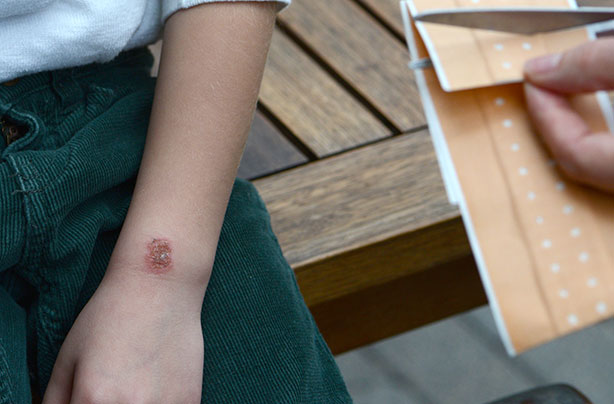First aid for burns: How to treat burns for babies and children
Know what to do if your child has been burnt


A burn can be caused by anything from a spilt cup of tea, to hot playground furniture or even steam.
But no matter how scary it might seem, if your child or an adult has a burn, it's important to stay calm and act quickly. The longer the burn is happening, the more serious the injury and longer it may take to heal. Follow these first aid tips from St John's Ambulance so you're prepared in case of an accident.
What to do if your child has a burn
If you think your child might have been burnt, look out for the following symptoms:
- Red skin
- Swelling
- Blisters which have later formed
- Peeling skin
- The skin has turned white or scorched
First aid for burns: How to treat your child
1. Hold the area under cold water for at least 10 minutes. This makes the swelling go down and cools the skin. Don't use ice, cream or gels as this can make the damage to the skin tissue work and increase the change of it becoming infected.
2.Remove their clothing Take off all their clothing apart from any clothes which are stuck to the burn.
3. Protect the burn from an infection Make a sterile dressing from clean cling film or a clean, plastic bag and put over the burn. This keeps it moist and will help it heal. Make sure not to wrap it too tightly as it can cut off circulation.
Watch this helpful video for more information on how treat your child's burn.
GoodtoKnow Newsletter
Parenting advice, hot topics, best buys and family finance tips delivered straight to your inbox.
http://www.youtube.com/watch?v=rqLbwfEZwQc
You should always seek medical advice if your baby has a burn or scald. If your baby has a serious burn, call 999 or 112 for emergency medical help. The injury is serious if the burn is larger than the palm of the recipients hand, on the face, feet or hands, or if it is a deep burn.
While you are waiting for medical help, you may need to treat your child for shock. If so, cradle your baby, or if your child is older, lie them down with their feet elevated or supported. Loosen any tight clothing around their neck chest and waist and try to keep them calm and comfortable while regularly checking their breathing, pulse and if they are responding.

Freelance writer Lucy Gornall is the former health and fitness editor for various women’s magazines including Woman&Home Feel Good You. She has previously written for titles including Now, Look and Cosmopolitan, Woman, Woman's Own, Woman's Weekly and Chat. She lives and breathes all things fitness.